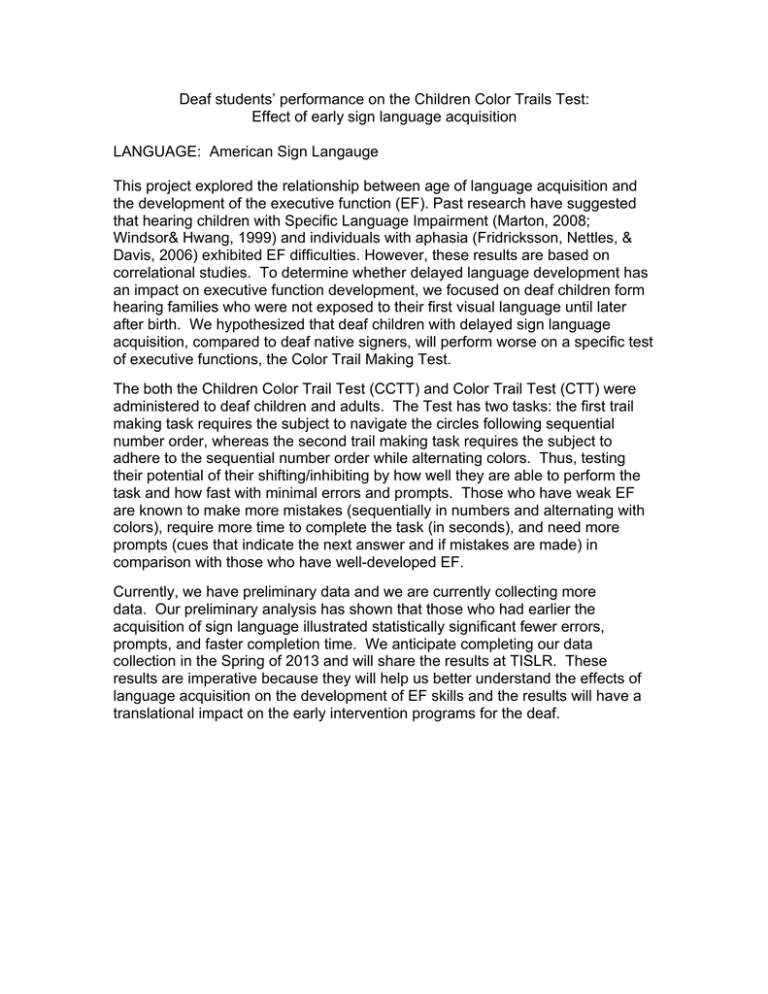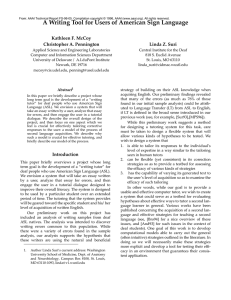Deaf students’ performance on the Children Color Trails Test:
advertisement

Deaf students’ performance on the Children Color Trails Test: Effect of early sign language acquisition LANGUAGE: American Sign Langauge This project explored the relationship between age of language acquisition and the development of the executive function (EF). Past research have suggested that hearing children with Specific Language Impairment (Marton, 2008; Windsor& Hwang, 1999) and individuals with aphasia (Fridricksson, Nettles, & Davis, 2006) exhibited EF difficulties. However, these results are based on correlational studies. To determine whether delayed language development has an impact on executive function development, we focused on deaf children form hearing families who were not exposed to their first visual language until later after birth. We hypothesized that deaf children with delayed sign language acquisition, compared to deaf native signers, will perform worse on a specific test of executive functions, the Color Trail Making Test. The both the Children Color Trail Test (CCTT) and Color Trail Test (CTT) were administered to deaf children and adults. The Test has two tasks: the first trail making task requires the subject to navigate the circles following sequential number order, whereas the second trail making task requires the subject to adhere to the sequential number order while alternating colors. Thus, testing their potential of their shifting/inhibiting by how well they are able to perform the task and how fast with minimal errors and prompts. Those who have weak EF are known to make more mistakes (sequentially in numbers and alternating with colors), require more time to complete the task (in seconds), and need more prompts (cues that indicate the next answer and if mistakes are made) in comparison with those who have well-developed EF. Currently, we have preliminary data and we are currently collecting more data. Our preliminary analysis has shown that those who had earlier the acquisition of sign language illustrated statistically significant fewer errors, prompts, and faster completion time. We anticipate completing our data collection in the Spring of 2013 and will share the results at TISLR. These results are imperative because they will help us better understand the effects of language acquisition on the development of EF skills and the results will have a translational impact on the early intervention programs for the deaf.



